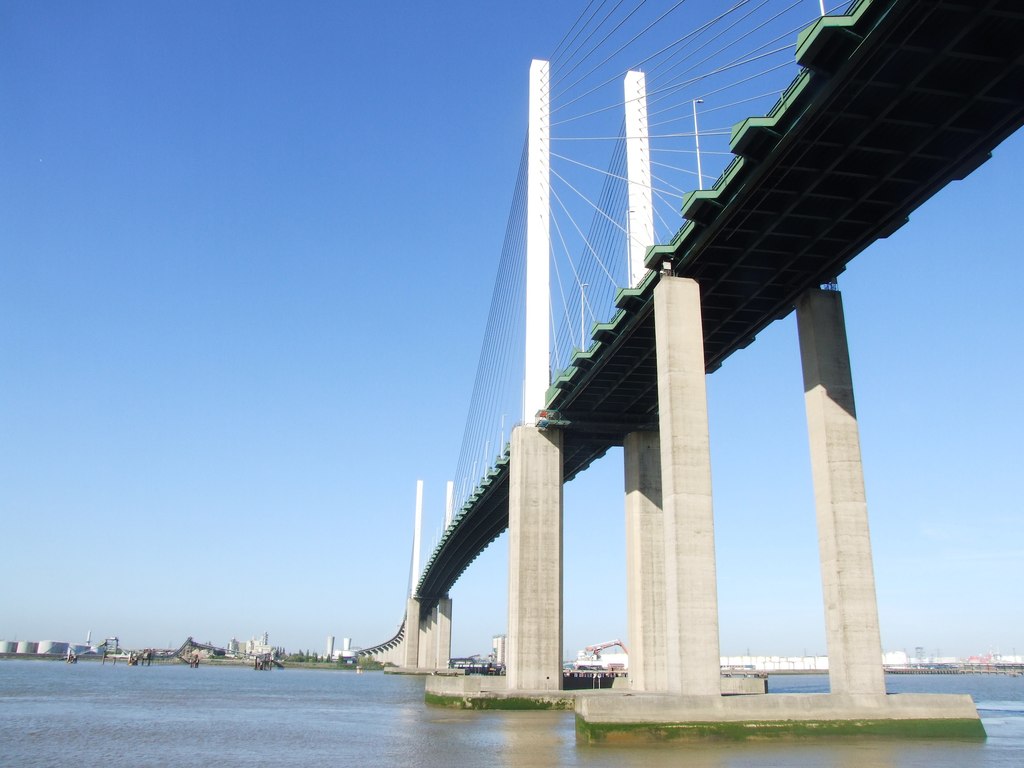
The government has started its hunt for a new operator of the “Dart Charge” at the Dartford Crossing in Kent, launching a search for partners to upgrade payments, data services and operations infrastructure in a deal worth up to £150 million.
The contract notice, published today on a European procurement portal, comes as French firm Sanef*, which won the right to operate the crossing in 2013, comes to the end of its £367 million, seven-year contract.
The “second generation free-flow charging service solution” will be contracted through three main packages, each including lifecycle IT service management. The winner will be handling payments of circa. £200 million per year.
Dartford Crossing: “New Road User Charging Models”
The company taking over from Sanef will have to make the hugely busy crossing able to accommodate “connected and autonomous vehicles, and mobility-as-a-service technologies” in future, as well as potentially “new road user charging models (e.g. dynamic charging, time of day charging, surcharge period)”.
The Dartford crossing comprises a bridge – when opened in 1991, the longest cable-stayed bridge in Europe – and tunnel across the Thames, approximately 16 miles east of central London. It is currently the only fixed Thames crossing east of London. It is a critical part of the country’s strategic road network.
The pending contract, which could be as long as nearly 10 years (18 months, followed by seven years, with the possibility of a two-year extension), will include the transfer of huge amounts of data to the new contract winner: the crossing uses Automatic Number Plate Recognition (ANPR) systems to identify vehicles crossing and then automatically charge the owner £2.50. Approximately 160,000 vehicles cross it daily.
The data needs to be transferred and “second generation free-flow charging service solution” in place within 18 months of signing the contract. Responses to the RFP are due in by October 15, 2019, Highways England said today.
The new system will need to interface with a range of third party back-ends, (e.g. that of the DVLA); match validated vehicle passage records to payments or exemption lists; process payments/”financial reconciliation, banking, a payment gateway, and accounting services related to the road user charging scheme” and more.
The crossing remains unpopular with motorists: an early Private Finance Initiative, it used toll revenue to pay off construction debt. Pledges were made to end the charge when the debt was repaid (in March 2002). The government opted to keep the charge.
*As of May 2016 trading as Emovis Operations Leeds Ltd.
See also: The Myths of Driverless Cars and Our Push for Autonomous Vehicles
Top image credit to Chris Whippet via Geograph.co.uk, Creative Commons.






